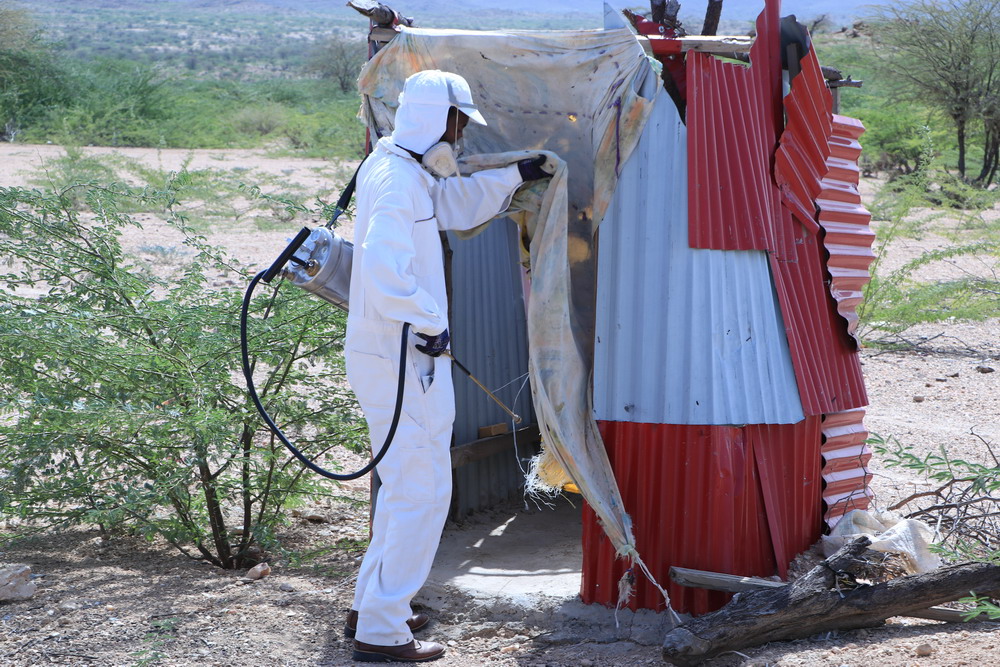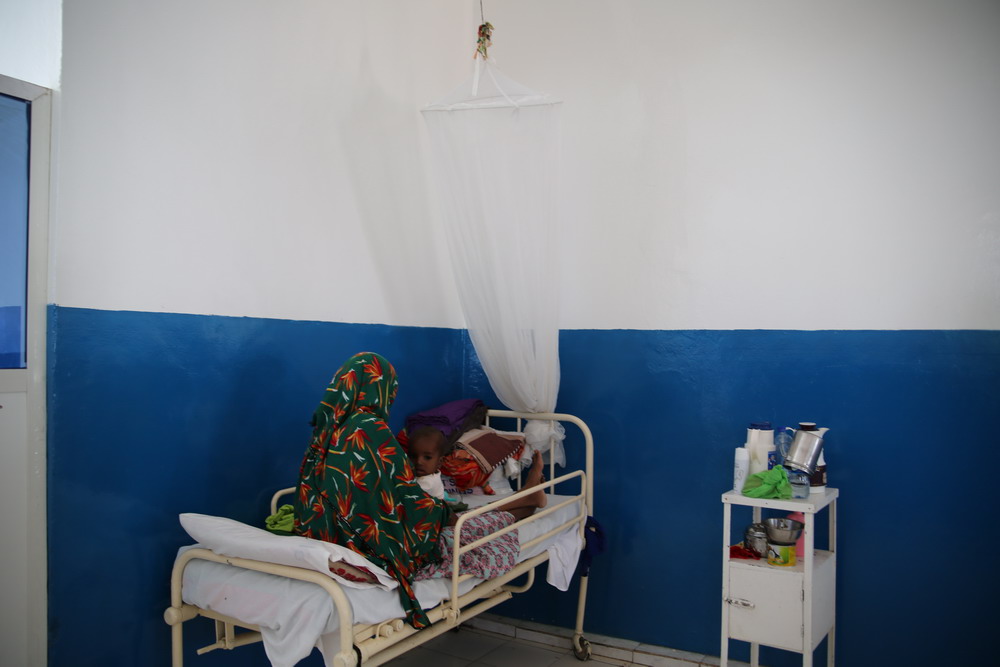
25 April 2021 – Ahead of World Malaria Day, marked annually on 25 April, WHO congratulates the Somali health authorities for taking bold and pragmatic steps to eliminate malaria from 6 pilot districts aiming to halt indigenous transmission of the disease.
While the world was grappling with the rapid and fast spreading pandemic of COVID-19, the World Health Organization (WHO) country office in Somalia has continued to scale up its fight against malaria despite disruption of essential health services in the country.
Somolia has a high-burden of malaria, and between 2000 and 2019, an estimated 759 000 cases and 1942 deaths from malaria have occurred. Various control efforts undertaken by the Government with the support of WHO and the United Nations Children’s Fund (UNICEF) and funded by the Global Fund have resulted in the reduction of incidence from 2.6 cases per 1000 population in 2014 to 1.8 per 1000 population in 2020, showing a 25% reduction.
Recognizing that as long as malaria exists as a disease, it will continue to threaten the poor and vulnerable communities of Somalia, in February of 2020, WHO, UNICEF worked with Somali health authorities to conduct a comprehensive review of the malaria programme. Based on this review, supported by the Global Fund, the Government updated the National Malaria Strategy and Monitoring and Evaluation Plan (2021–2025), which is a part of a multi-pronged approach to reduce prevalence of the disease in the country.
After months of deliberation and analysis, the country decided that conditions were right to target 6 districts for elimination as a pilot project – Odweyne in the region of Togdher; Ainabo in Sool; Burao in Togdher; Sheikh in Sahil; Burtinle in Nugal; and Goldogob in Mudug – all in Somaliland and Puntland. Planning for other regions would have been a challenge, mainly due to insecurity. As a result, from May 2021 onwards, led by the Somali Government and supported by the Global Fund, WHO and UNICEF will roll out national malaria elimination programmes in these 6 districts towards reaching the zero malaria target in some districts.
Sharpening the focus of the malaria elimination programme
“By updating the national malaria strategy, we have sharpened our focus on reducing the burden of malaria that Somali communities endure, one district at a time,” said Dr Mamunur Malik. “Even though we have a long road ahead of us, we are redoubling efforts to ensure we draw a line under this disease. With evidence to drive our strategies, commitment from the Government and donors, and a renewed sense of hope after observing the positive journeys of countries who have managed to eliminate malaria recently, we are confident that we will make it.”
The updated national malaria strategy outlines 4 pillars to achieve the goal of attaining zero deaths due to malaria and reducing malaria incidence from the current incidence of 1.8/1000 in 2020 to at least 0.5/1000 population by 2025.
Two of the pillars would result in creating more inclusive and well-coordinated malaria prevention and case management interventions; strengthening the capacity of institutions; and using effective strategies to boost malaria elimination and maintain no local transmission in at least 15 districts. The third and fourth pillars would enhance the generation and use of strategic information to guide interventions, as well as create an enabling environment for the nationwide malaria response, in areas such as programme management, resource mobilization, stewardship, and securing of commodities among others.
“While we have targeted 6 districts for malaria elimination, we continue to intensify our control efforts in the rest of the country. Our vector control efforts will help reduce the transmission of other vector-borne diseases, such as chikungunya and dengue fever,” said Dr Jamal Amran, Malariologist working for WHO Somalia country office.
Making bittersweet discoveries
Between 2019 and 2020, the Somali national malaria control programme made 2 new discoveries that will pose as speed bumps to the national goal of elimination of malaria by 2025. The first was the discovery of an invasive malaria vector (Anopheles stephensi), found mostly in urban areas, by 2 independent entomologists in Bossaso and Berbera from 2019 to 2020. The samples of this vector were sent to the United States of America (USA) for polymerase chain reaction (PCR) confirmation.
The other discovery, of the Plasmodium falciparum with gene deletion, which makes it harder to detect through the rapid diagnostic tests, was made by Dr Abdikarim Musse, WHO National Malaria Focal Point in Somaliland, in 2020, through the study of blood samples collected from infected patients who were registered at the Borama Hospital; the Sheikh Ali Jowhar Mother and Child Health clinic in Awdal; and the Hargeisa Group Hospital in Marodijeex. The discovery of this species was further validated by the London School of Hygiene and Tropical Medicine.
The detection of this vector and parasite were a milestone, given the severe strain on the programme and health care workers caused by COVID-19. However, while these new findings will help guide the response of the Somali national malaria control programme, they also worsen the malaria burden in the country, and require additional strategies and resources to curb the multiplication of these kinds of vectors and parasites.
So far though, the dominant species of malaria throughout the country has been P. falciparum, the deadliest of the 5 known human malaria-causing agents globally, which has been responsible for over 98% of infections.
Dr Ali Abdirahman, National Malaria Control Focal Point for Somalia, explains how the programme’s efforts are helping to empower young Somalis among others, and provide sustainable solutions to prevent the spread of malaria.
“While we work on malaria control strategies, we are also training young Somalis, teachers and health workers to learn how to participate in community interventions, such as reducing the chances of mosquitoes breeding in stagnant water. With support from the Global Fund, we have been teaching people on site and also hold specific regular training to equip people with skills,” said Dr Ali Abdirahman.
Progress made so far
In 2020, 341 341 suspected cases of malaria were tested, of which 27 333 were positive. All these cases were treated with artemisinin-based combination therapy. Compared with 2019, the number of confirmed malaria cases treated declined by 31% (39 687 confirmed cases of malaria were treated in 2019).
In order to offset the anticipated effect of COVID-19 on malaria control and elimination, WHO scaled up control efforts in high-risk areas. To that end, 1 473 529 long-lasting insecticidal nets were distributed to 2 947 058 people in malaria-prone areas. WHO also supported indoor residual spray activities in the flood-affected areas as a core intervention to reduce and control the risk of a surge in malaria cases. An estimated 269 685 people were protected by these control interventions.

“According to WHO, children under the age of 5 years in sub-Saharan Africa continued to account for approximately two thirds of global deaths from malaria. With continued support from our partners and communities’ renewed efforts, such as reducing ideal breeding grounds for mosquitoes, the use of treated mosquito nets, and continuing research around vector control, we can take huge strides in malaria control,” said Dr Fawziya Abikar Nur, Minister of Health and Human Services, Federal Government of Somalia.
The road ahead
In addition to the rolling out of malaria elimination activities in selected districts as a start, the national malaria programme has plans to reach zero malaria in other areas by strengthening primary health care systems that ensure access to malaria prevention, diagnosis and treatment services, without financial hardship, for everyone living within their borders – regardless of nationality or legal status. The programme also intends to conduct additional research on the recently identified vector and parasite; strengthen the malaria surveillance system; and strengthen vector control core measures, including Larval Source Management, the use of insecticide residual spray and long-lasting insecticidal nets. The programme will also raise awareness around malaria prevention; increase cross-border collaboration, including with Djibouti, Eritrea and Ethiopia, to avoid the importation of vectors and parasites as a result of unmonitored and free travel within the region; and consider ways to collaborate with private sector health institutions to curb the spread of malaria.








